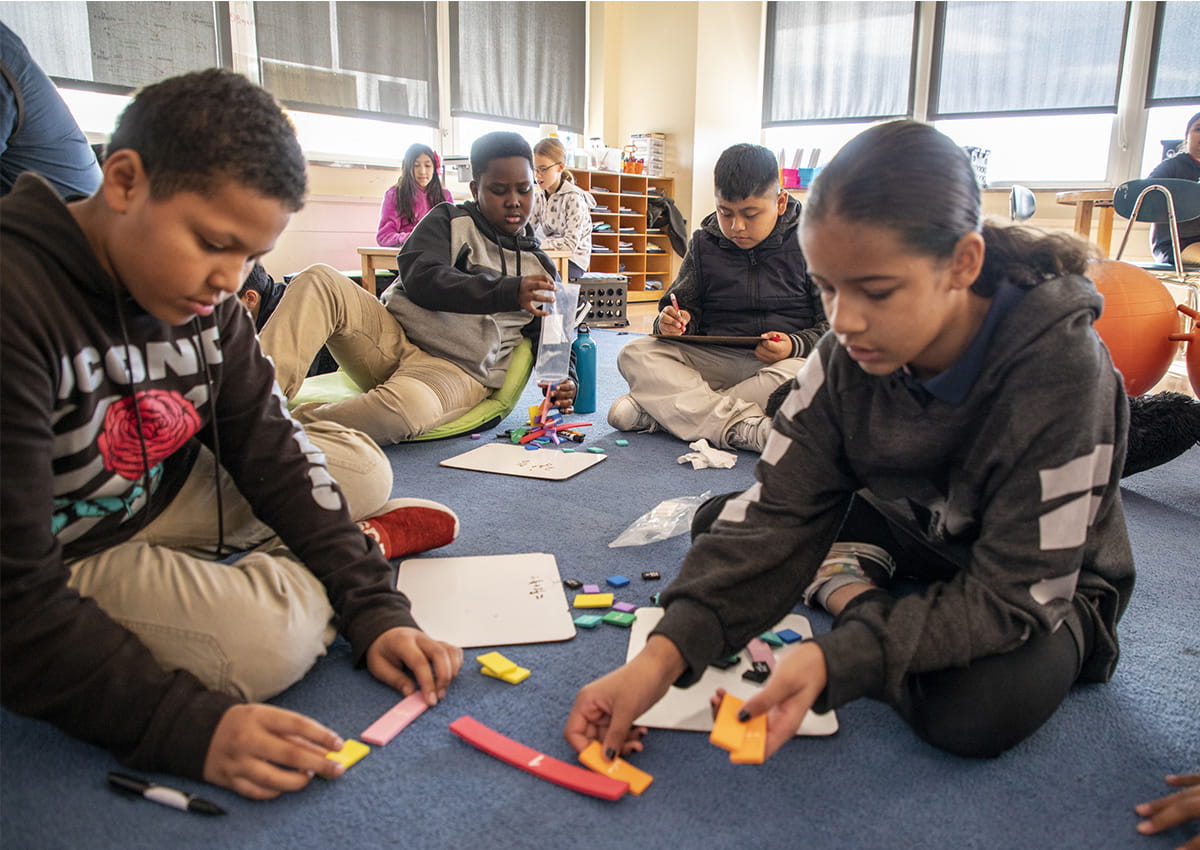Middle school students need support. Academically. Socially. Mentally. They’re overwhelmed. Checked out. Stressed out. Bored. Frustrated. But deep down, they want to be challenged.
Stuck in that gray area between kids and teens, when they have little control over much of anything in their lives, middle school students are very clear about what they need and how they learn best.
Their relationships are critical. They want to make their own choices. They crave a sense of ownership.
To effectively learn, middle school students need certain classroom conditions, and more importantly, a mindset shift in how we create conditions for optimal learning.
Create an Ideal Learning Environment
Middle school students need a caring school teacher, time to work with their peers in small groups, structured choices, hands-on learning opportunities, and a chance to express themselves. Many of you out there are already doing this work, but we need an innovative approach in every middle school classroom. Here are some ideas I have seen work well.
- Treat Your Classroom Like Your Students’ Classroom. Picture this: From the first minute your students walk into your classroom, they’re greeted by images of success, challenge, and optimism. Their individual goals are visible. They can see real-time progress on the walls. They feel welcome and included because you took the time to encourage them to make badges that represent who they are as individuals and are displayed to help them feel a sense of accomplishment and ownership of their space.
- Organize Your Classroom for Group Work. Instead of rows, arrange your students in table groups. At first, you can assign the groups, but put procedures in place so their groups will change monthly. Groups are the focal point for student work and learning, so be sure to assign your students a role that demonstrates their unique strengths and instills a sense of collaboration.
- Create Opportunities for Students to Pursue Their Passions. One day a week (or if they finish their work early), carve out time for your students to work at different stations, such as:
- A computer station where they can practice lessons, strengthen skills, or conduct research
- A STEAM station where they can read about remarkable contributors to science, technology, engineering, the arts, or math. They might play with robotics parts or magnetic tiles or take some creative problem-solving time.
- A reading and writing station with books and a beanbag chair they can sink into for quiet reflection time
- An art station with markers, creative stickers and supplies, and blank paper to encourage them to draw or create or express learning artistically
- Encourage Communication in Your Classroom. Place a mailbox at the front of your room to let your students know they can write you a letter and “mail” it to you if they need support or are really excited about something. Check the mailbox daily, and be sure to reply to each student.
- Set Up Your Classroom for Interaction. Hang an interactive whiteboard at the front of your room, along with a traditional bulletin board for collaboration. Treat your desk as a placeholder for your items instead of the spot from where you teach. Instead, move around your classroom, engaging with students as you teach, making eye contact, smiling, and showing them you care.
- Create a Place of Positivity. Start each class with a minute of positive priming—movement, laughter, or music. Let your students contribute ideas in a jar and pull out a different activity idea each day. Your students can:
- Submit a joke to be read—you can even let them read it
- Insert pictures of fun things you can show the class
- Suggest a clip from their favorite song
- Suggest a dance move they will teach the class
- End with a Quick Exit and Reflection. At the end of the period, ask your students what they learned and what they are still wondering about. Then stand at the door and say goodbye to each of them as you welcome in your next batch of students.
No matter what subject you teach, your middle school classroom should be student centered and based on your students’ unique strengths. You will still provide the content they need and cover the standards, but you will do it through a lens of support. Your students will know you care, will want to be in your class, and will hopefully learn lots of things along the way.
For more ideas on creating a positive learning environment in your classroom, listen to this podcast with Jessica Medley, an Extraordinary Educator™ and middle school teacher.









